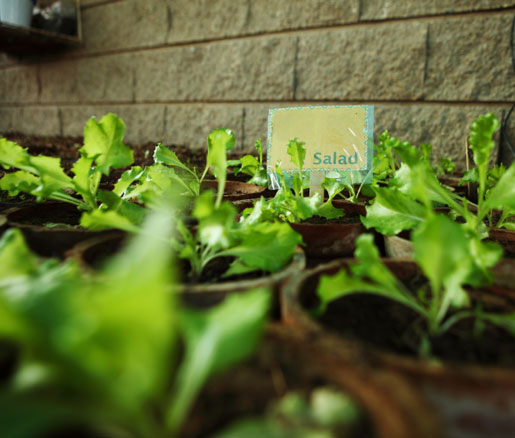
A new breed of farmer is cropping up in the most unlikely of places: city centers. Industrial rooftops, once-vacant lots, and the backs of eighteen-foot box trucks are now home to food-bearing farms—and their bounty can be spotted everywhere from farmers’ markets to top kitchens.
“Urban farming is one of the most exciting areas for new farmers because it’s happening in so many places, expanding so rapidly, and there is so much innovation and passion behind it,” explains Taylor Reid, founder of BeginningFarmers.org, an online database of urban farming opportunities around the country.
According to Liz Carollo, publicity manager for New York City’s Greenmarket program, urban farming and gardening has been on the upswing in recent years. “The more time urbanites spend at their desks and in front of their screens, the more inclination they have to give back and work in a more traditional way, to really get their hands dirty,” she says, “People are showing that urban farming can be an economically viable model, not just a hobby.”
Eating Local
In New York City, a group of young friends—Ben Flanner, an engineer with a finance background, Anastasia Plakias, a veteran of the Bastianich restaurant empire, and Gwen Schantz, founder of a Brooklyn food co-op—raised money to found and build Brooklyn Grange, a commercial organic farm that sits atop an industrial building in Queens.
The rooftop soil farm, which measures just under an acre, produces a whopping 16,000 pounds of food every year, including tender heirloom tomatoes and zippy salad greens (along with fresh herbs, squash, and Swiss chard) that find their way onto menus at some of NYC’s top restaurants, like Roberta’s, Fatty ’Cue, Joseph Leonard, Bobo, and Five Leaves.
Economic Solutions
In addition to delicious local food, urban farms are providing hope in areas that have been hit hardest by the economic downturn of the past several years. Perhaps this is best illustrated in Detroit, where urban agriculture projects are moving faster than Henry Ford’s assembly line once did.
Detroit businessman John Hantz is using his own personal income to found what he hopes will be the world’s largest urban farm—a project he sees as a chance to reinvent his blighted city.
Hantz is working with the city of Detroit to purchase some 50 acres of land for the project, which will provide hundreds of “green” jobs for local residents, a destination for tourists, a beautified area of the city, and a steady supply of safe, local food for city residents.
“People often think you have to have a big solution to a big problem—why not keep it simple and start with a simple solution?” Hantz recently told The Atlantic.
The Future of Farming
In cities like San Francisco, where earlier this year city supervisors passed an amendment allowing urban farms in residential areas to sell commercially, it’s getting easier for these farms to operate and thrive.
That means that the three-quarter-acre Little City Gardens, a former abandoned lot that co-founder Brooke Budner spotted from her apartment’s roof, can now sell its custom salad mix and tender pea shoots to restaurants like Tartine and at its own farm stand.
“We started this project because we believe in the importance of regenerating a grass-roots economy and of learning as a culture to respect the labor that goes into healthy food production,” Budner says. As another part of their mission, Budner and co-founder Caitlin Galloway hope to make urban farming a viable career path for urbanites in the future.
By delivering opportunities for job creation, urban beautification, increased food access, and environmental benefits, it’s likely that urban agriculture will continue to thrive. “More vacant lots will turn into gardens, more compost sites will show up, and there will be more opportunities for food to get distributed through markets and CSAs,” predicts Greenmarket’s Carollo. “People want this. It’s not going anywhere anytime soon.”
Jamie Feldmar is a food writer based in Brooklyn, New York.



-57 web.jpg)


